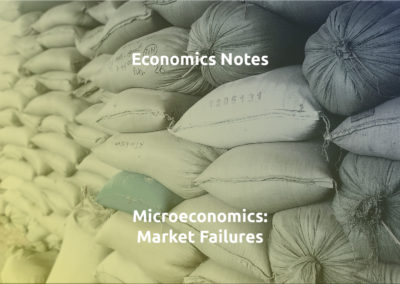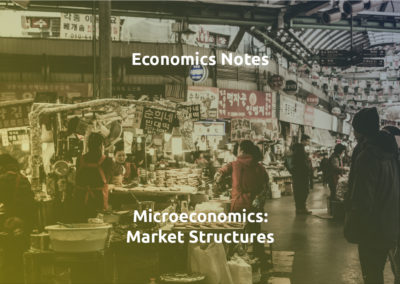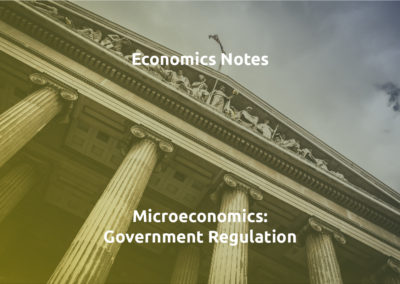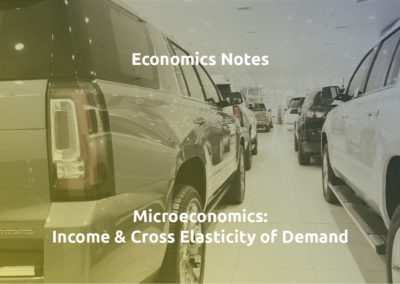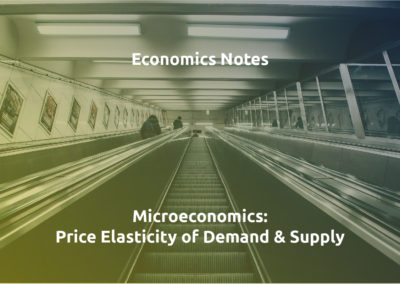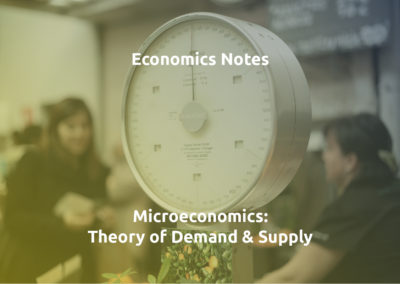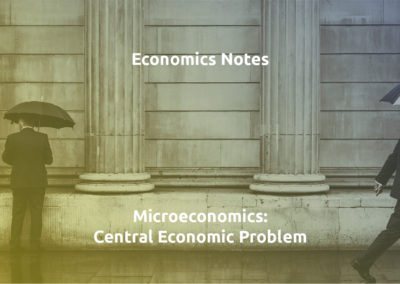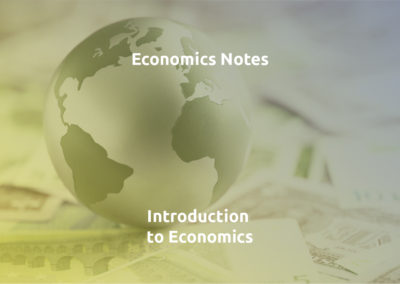JC Economics Tuition Notes Central Economic Problem
In this introductory chapter, you will examine the key economics issues that surround the study of Microeconomics, namely the Central Economic Problem. This ‘problem’ refers to the issue of scarcity, which is the consequence of unlimited wants and finite resources. Given the resource constraints, individuals, firms and governments must make choices to allocate and utilise resources within their means, which incur opportunity costs, seen in terms of the next best alternative forgone. During our economics tuition, you will delve into this chapter to find out how resource allocation is conducted in various example case studies and real world examples.
Content of Teaching
The following list describes the areas of study that will aid you in your understanding of the Microeconomics chapter on Central Economic Problem. By separating the in-depth content into the respective sections, the organization of content will facilitate the ease of comprehension in recognising the importance of specific economics concepts and key terms that are to be applied in your JC Economics Essays and Case Study Questions during the examinations.
2.2.1 The Problems of Scarcity
I. Meaning
II. Diagram Illustration
2.2.2 Concept of Resource Allocation
I. Meaning
II. Process of Resource Allocation
2.2.3 Opportunity Cost and Production Possibility
I. Meaning of Opportunity Cost
II. Meaning of Production Possibility Curve
III. Illustration of Opportunity Cost through the use of PPC
IV. Rate of Opportunity Cost as seen by PPC
2.2.4 Application of Concept of Opportunity Cost through the use of PPC
I. Overview
II. Import of resources suitable for the production of capital goods
III. Import of goods and services for consumption
IV. Increase in the production of capital goods and decrease in the production of consumer goods
2.2.5 Concept of Marginal Principles in Decision-Making
I. Meaning
II. How the Concept of Marginal Principle is Conducted
2.2.6 Concept of Economic Efficiency
I. Meaning
II. Allocative Efficiency
III. Production Efficiency
2.2.7 Types of Goods
I. Dimension of Goods
II. Concept of Externality
III. Classification of Goods
Chapter 2.3 – Three Types of Economic Systems
2.3.1 Meaning and Functions of Economic system
2.3.2 Free Market Economy
I. Meaning
II. Advantages and Disadvantages
2.3.3 Command Economy
I. Meaning
II. Advantages and Disadvantages
2.3.4 Mixed Economy
I. Meaning
II. Advantages and Disadvantages
Iii. Problems encountered during the transition from command to mixed economy.
Economic Definitions and Key Concepts
In this section, the essential economic definitions and concepts are described to aid you in your study of the topic of Central Economic Problem. As part of this Microeconomic chapter, it is important to comprehend specific key terms, like Production Possibility Curve, Opportunity Cost and Scarcity. These terms are to be used and applied in your JC Economics Essays and Case Study Questions, which will be featured in the following section below.
Q1. What is scarcity?
Scarcity is the fundamental economic problem of having unlimited human wants and needs in a world of limited resources.
Q2. What causes the problem of scarcity?
The fact that there are insufficient productive resources to fulfill all human needs and wants is the problem with scarcity.
Q3. Why scarcity cannot be eradicated?
There is a limited amount of resources in the world eg. Coal. Hence it is impossible to eradicate scarcity due to the shortage of resources which requires effective allocation.
Q4. How to address the problem of scarcity?
To address the problem of scarcity, the government can allocate resources, like land, raw materials etc, productively through management policies.
Q5. What is opportunity cost?
In Microeconomic theory, the opportunity cost of a choice is the value of the next best alternative forgone, in a situation in which a choice needs to be made between several mutually exclusive alternatives given limited resources.
Q6. Why is there opportunity cost?
Because of scarcity, every time we do one thing we necessarily have to forgo doing something else desirable. So there is an opportunity cost to everything we do, and that cost is expressed in terms of the most valuable alternative that is sacrificed.
Q7. What is utility?
Utility is a representation of preferences over some set of goods and services.
Q8. What does marginal utility mean?
The marginal utility of a good or service is the gain (or loss) from an increase (or decrease) in the consumption of that good or service.
Q9. What is a capital good?
A capital good (sometimes simply capital in economics) is a durable good that is used in production of goods or services.
Q10. What are the factors of production?
Factors of production are the inputs that are wounded to the production process. For example, land, capital, labour are all factors of production.
Q11. What is the Production Possibility Curve (PPC)?
A PPC is a graph that shows the maximum attainable combinations of output that can be produced in an economy within a specified period of time, when all the available resources are fully and efficiently employed, at a given state of technology.
Q12. What is increasing opportunity cost?
Increasing opportunity cost is reflected in a concave PPC to the origin. This means that as more of a good is produced, larger and larger quantities of the alternative good must be sacrificed.
Q13. What is constant opportunity cost?
This happens when factors of production are perfectly suitable in the production of both goods. Constant opportunity cost is reflected in a straight line PPC.
Q14. What is decreasing opportunity cost?
This means that as more of a good is produced, smaller and smaller quantities of the alternative good is sacrificed.
Q15. What causes the production possibility curves to shift outward?
-Increase in quantity/quality of resources
-Technological improvement
Q16. What causes the production possibility curves to shift inward?
Decrease in quantity/quality of resources
JC Economics Essays for Practice and Discussion
In our tutorials for Economics Tuition, we will make discussion on how to develop a structure for their essay writing assignments. During the economics tuition, you will also be tasked to a class assignment after you have set the essay structure. This essay outline structure setting process is essential in your aim to grasp the JC Economics Essays segment well as outlines can help you to organize your thoughts by segregating them into areas of discussion. Our economics tuition program will feature essay outlines for your reference to develop the appropriate structure setting, so that you can attempt the practices on your own effectively.
Question 1 (Class Discussion)
Consider how the issue of scarcity, choice and opportunity cost are resolved in anyone area (education, housing or healthcare) in your country
Question 3 (Class Assignment)
Explain two ways in which an economy might move from a point within its production possibility curve (PPC) to a point on it. (10)
Question 4 (Class Discussion)
“Economic instability is inevitable in the market economy and slow growth inevitable in the command economy.” How far do you agree with the statement?
Question 5 (Class Discussion)
GCE A Level 2016 Question 2b.
Issue-based Discussion for Learning and Application
In this section, we will feature issue-based discussion to demonstrate the applicability of economics concepts that are covered in the Microeconomic topic of Central Economic Problem. Some of these issues are described by our JC Economics Tutor Simon Ng, who will illustrate the importance of using real-world examples to facilitate conceptual understanding and exam-oriented application skills.
Title: Overcoming our Economic Constraints
Singapore is small city state with a limited land space, small size of population and barren land of resources. However, this little red dot has overcome its constraints and attained a remarkable level of economic growth over the years. In 2016, our GDP stands at $394.5 billion despite being a small nation with a small population of 5.4 million.
Over the years, Singapore government has recognized the limitations of Singapore and is quick to introduce measures and policies in overcoming limitations of land space, availability of resources and lack of market demand. Through land reclamation, Singapore has expanded its land space over the years as seen from the new business district in Marina Bay and Tuas. Singapore has also embarked on the import of foreign workers to expand her working population to help sustain economic growth for the country.
Along with the expansion of resources, the government has also stepped up their efforts to raise inflow of FDI and export demand to overcome our limited domestic demand and this has been an useful strategy over the years. These high-valued industries have helped to propel our economy to high level of economic growth. As a result, we are able to attain higher level of real GDP per capita income and higher wage rate.
Question for Rational Thinking
Based on the economics principles of Production Possibility Curve, explain how Singapore achieve economic growth and potential growth despite her economic constraints.
More Microeconomics Notes
Read the other chapters on Microeconomics


